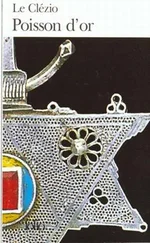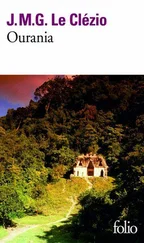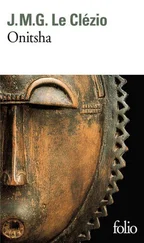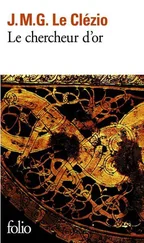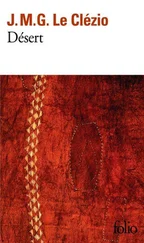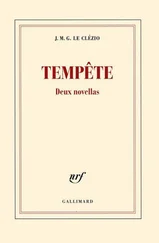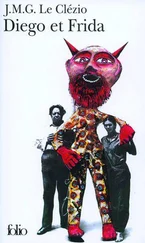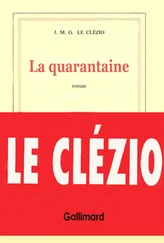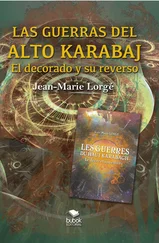“Where’ve you been,” Nelson repeated, his eyes fixed on Zé’s.
“Juazeiro. I was delivering twenty tons of cement to a firm. I stopped in Canindé on the way back. The people are starving out there, they told me there were forty cases of plague.”
“Plague?!”
“The black death. The doctors in the hospital wanted to close the town, but the mayor doesn’t want the news to get out because of the elections. It’s always the same old story! The poor don’t grow, they swell … I read that on a Mercedes tractor-trailer, a pau de arara that was coming from the plantations.”
All over Brazil the long-distance truck drivers thought up a “maxim” and had it painted on a decorated piece of wood they fixed to the front and back of their vehicle. Some showed a humorous or poetic touch, others were happy to add their bit to the prevailing misogyny, but the majority had one sole theme: inexhaustible variations on the curse that is life. It was from the gaily colored aphorisms speeding along the roads that Zé had derived his whole philosophy. At fifty — he looked much older, as did the majority of the lower classes in the Nordeste —he had hundreds of different adages stored in his memory. Whenever he passed trucks as he drove around, he made sure to learn their anonymous maxims parading their modicum of irony, mysticism or suffering below the windscreen. After having meditated on them for hours, sometimes for days, he made the most caustic ones his own and peppered his conversation with them. Nelson looked on him as a fount of wisdom, especially as his own truck bore a sentence that utterly perplexed him: A vida éuma rede que o destino balança , life is a hammock rocked by fate.
“By the way, I almost forgot,” said Zé, rummaging around in his pocket. “Look, I’ve got these for you as well. I found them in Petrolina.”
He handed Nelson two little booklets of literatura de cordel , those long popular poems that could be found almost everywhere in the Sertão. Written and illustrated by the violeiros , wandering guitarists who printed them themselves on poor-quality paper, they were sung by their authors at markets, in the streets or cheap restaurants. To display them to potential customers, the violeiros were in the habit of tying them around the middle, like any old cloth, and hanging them from a cord strung between two trees. Thus the name “cord literature” for all such chapbooks.
Nelson could manage to decipher a text word by word, but it demanded too intense an effort for him to read normally.
“There’s The cow that started talking about the present crisis and João Peitudo, the son of Lampião and Maria Bonita ,” Zé went on. Would you like us to sing them together in a while?”
Nothing gave Nelson more pleasure. He had a guitar and he’d learned to play the monotonous rhythm needed to chant these poems; he only needed to hear them once or twice for them to be imprinted on his memory for good.
“Why not right away?” he asked, twisting around to get his instrument. “Shall we start with the Son of Lampião ?”
“There’s something I have to tell you first. You know,” he said, lowering his eyes and fixing them on his large, scarred hands, “a few years ago all the truck drivers had a dog in their truck but today any dog can have a truck … It’s getting harder and harder to get a load, so I couldn’t pay the installments on my Berliet … Well, I’ve been forced … I really have been, I assure you. I’ve … the Willis, you understand. I’ve sold the Willis.”
Not far away, behind Nelson’s shack, a dustcart could be heard tipping a load of refuse on the rubbish dump.
The Italian journey: of Morgan le Fay, of Atlantis & of the fumes of Mount Etna
 WE WERE ONE day’s journey away from the Straits of Messina, riding slowly in the oppressive heat of Calabria, when Athanasius opened a missive with green wax seals that were unknown to me. Drawing my attention with a smile and a little gesture, he read out the letter to me, now and then absentmindedly wiping away the sweat dripping down his forehead with a handkerchief:
WE WERE ONE day’s journey away from the Straits of Messina, riding slowly in the oppressive heat of Calabria, when Athanasius opened a missive with green wax seals that were unknown to me. Drawing my attention with a smile and a little gesture, he read out the letter to me, now and then absentmindedly wiping away the sweat dripping down his forehead with a handkerchief:
On the morning of the Assumption of the most Blessed Virgin, standing alone at my window, I saw such numerous and such new things that I cannot — nor will not — stop thinking about them because the most Blessed Virgin caused a vestige of the paradise that she entered on this very day centuries ago to appear in the lighthouse where I was. And if the eye up above possesses, like the intellect, a mirror in which, of its own volition, it can make anything it wishes appear, then I can call the one that I saw the mirror of that mirror! In an instant the sea that bathes Sicily swelled up and became, over a distance of about ten miles, like the spine of a black mountain. Then there appeared a very clear & transparent crystal; it resembled a mirror, the top of which was resting against the mountain and the foot on the Calabrian shore. This mirror suddenly showed a succession of more than ten thousand pilasters of equal height; & the bases between pilaster & pilaster were of the same bright clarity, of the same shadow. One moment later the said pilasters lost height and curved to form arches, such as the aqueducts in Rome or the foundations of Solomon have; & the rest of the water remained a simple mirror, even to the mountain pools of Sicily. But after a short while a large cornice formed above the arches & on it there appeared a number of veritable castles, all set out in this immense glass & all of the same form & the same workmanship. Then the towers turned into a colonnaded theatre; then the theatre split along a double vanishing point; then the alignment of the columns became a very long façade with ten rows of windows; the façade changed into a forest of pines & cypresses of equal height, then into other species of trees … At that everything disappeared & the sea, hardly rougher than before, became its former self. That is this famous Fata Morgana, which for twenty-six years I had believed improbable & which I have now seen, more beautiful & and more real than what had been described to me. Since that hour I believe it is real, I believe in this way various fleeting colors have of appearing, more beautiful and more vivid than those of art or of nature. I desire Your Reverence, who live surrounded by the glories of Rome and contemplate from close to the divine verities, to tell me who the architect or the craftsman is & with what art & what material he gathered together these varied and numerous glories in one place. While waiting, I pray God may ever look favorably on me and I commend myself to His most holy sacrifices .
Reverend Father Ignazio Angelucci of Reggio. S. J .
This letter, dated August 22, 1633, had been given to Athanasius by Father Riccioli who had admitted he couldn’t understand a word of it. Concerned about Father Angelucci’s mental health & because Reggio was one of the places where we had to stop, he had asked my master to clarify this enigma.
“Well, Caspar,” Kircher said, handing me the letter, “what do you think of it? Madness? Mystical visions? Authenticated miracle? Is our Ignazio a gentle simpleton or a holy man the Lord has touched with his finger?”
“ Blessed are the poor in spirit ,” I replied without hesitation. “The chosen ones of God have often been seen as fools or madmen in the eyes of their fellow men. However, the things that Father Angelucci describes with such sincerity seem to me to be so far beyond understanding that I believe he has been fortunate enough to witness a true miracle.”
Читать дальше

 WE WERE ONE day’s journey away from the Straits of Messina, riding slowly in the oppressive heat of Calabria, when Athanasius opened a missive with green wax seals that were unknown to me. Drawing my attention with a smile and a little gesture, he read out the letter to me, now and then absentmindedly wiping away the sweat dripping down his forehead with a handkerchief:
WE WERE ONE day’s journey away from the Straits of Messina, riding slowly in the oppressive heat of Calabria, when Athanasius opened a missive with green wax seals that were unknown to me. Drawing my attention with a smile and a little gesture, he read out the letter to me, now and then absentmindedly wiping away the sweat dripping down his forehead with a handkerchief:
